Component dependencies - Use this when you want to keep two components independent.
Subcomponents - Use this when you want to keep two components coupled.
I will use the below example to explain Component dependencies and Subcomponents. Some points worth noticing about the example are:
SomeClassA1 can be created without any dependency. ModuleA provides and instance of SomeClassA1 via the provideSomeClassA1() method.SomeClassB1 cannot be created without SomeClassA1. ModuleB can provide an instance of SomeClassB1 only if an instance of SomeClassA1 is passed as an argument to provideSomeClassB1() method.
@Module
public class ModuleA {
@Provides
public SomeClassA1 provideSomeClassA1() {
return new SomeClassA1();
}
}
@Module
public class ModuleB {
@Provides
public SomeClassB1 provideSomeClassB1(SomeClassA1 someClassA1) {
return new SomeClassB1(someClassA1);
}
}
public class SomeClassA1 {
public SomeClassA1() {}
}
public class SomeClassB1 {
private SomeClassA1 someClassA1;
public SomeClassB1(SomeClassA1 someClassA1) {
this.someClassA1 = someClassA1;
}
}
Dagger will take care of passing the instance of SomeClassA1 as an argument to provideSomeClassB1() method on ModuleB whenever the Component/Subcomponent declaring ModuleB is initialized. We need to instruct Dagger how to fulfill the dependency. This can be done either by using Component dependency or Subcomponent.
Component dependency
Note the following points in the Component dependency example below:
ComponentB has to define the dependency via the dependencies method on @Component annotation. ComponentA doesn't need to declare ModuleB. This keeps the two components independent.
public class ComponentDependency {
@Component(modules = ModuleA.class)
public interface ComponentA {
SomeClassA1 someClassA1();
}
@Component(modules = ModuleB.class, dependencies = ComponentA.class)
public interface ComponentB {
SomeClassB1 someClassB1();
}
public static void main(String[] args) {
ModuleA moduleA = new ModuleA();
ComponentA componentA = DaggerComponentDependency_ComponentA.builder()
.moduleA(moduleA)
.build();
ModuleB moduleB = new ModuleB();
ComponentB componentB = DaggerComponentDependency_ComponentB.builder()
.moduleB(moduleB)
.componentA(componentA)
.build();
}
}
SubComponent
Note the following points in the SubComponent example:
- As
ComponentB has not defined the dependency on ModuleA, it cannot live independently. It becomes dependent on the component that will provide the ModuleA. Hence it has a @Subcomponent annotation.
ComponentA has declared ModuleB via the interface method componentB(). This makes the two components coupled. In fact, ComponentB can only be initialized via ComponentA.
public class SubComponent {
@Component(modules = ModuleA.class)
public interface ComponentA {
ComponentB componentB(ModuleB moduleB);
}
@Subcomponent(modules = ModuleB.class)
public interface ComponentB {
SomeClassB1 someClassB1();
}
public static void main(String[] args) {
ModuleA moduleA = new ModuleA();
ComponentA componentA = DaggerSubComponent_ComponentA.builder()
.moduleA(moduleA)
.build();
ModuleB moduleB = new ModuleB();
ComponentB componentB = componentA.componentB(moduleB);
}
}


